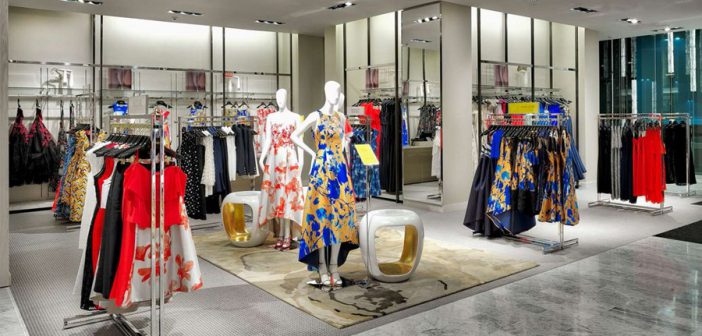Consumers’ attachment to their smartphones presents a key opportunity for brands if they know how to leverage mobile-optimized marketing mediums, according to a report from Fashionbi.
On average, individuals check their phones about 150 times per day, with each glance lasting around one minute and 10 seconds, giving brands numerous chances to reach their audiences in small but powerful ways. Making the most of these minute sessions revolves around being visible and accessible to consumers at varied steps in the purchase path.
“Every micro-moment is an intent-rich interaction a consumer can have with a brand,” said Ambika Zutshi, CEO of Fashionbi, Milan. “And this can start from any touchpoint – for instance, either with a simple search to get more recommendations or with direct landing on his or her favorite brand’s Web site searching for that particular product and getting all the assurance before he or she makes that purchase.
“Now, imagine if the brand doesn’t have the right SEO/SEM strategy and doesn’t appear in the first page of search engine when a customer is uncertain, or the Web site is not easily browsable with a lot of glitches and no live customer care support to get instance assistance from,” she said. “This is an opportunity lost and perhaps forever.
“As suggested by Fashionbi analysts in our latest market research on Micro-moments in Fashion, a brand needs to be aware of all these possible touch-points a customer can get in touch with it, and be alert and effective in resolving the issues and simulating further purchase for him or her.”
Big opportunity
Today, about a third of fashion and luxury ecommerce transactions are done on smartphones, and by 2017, mobile is expected to account for 70 percent of digital sales. Showing consumers’ comfort with spending on mobile, today the ratio of cart totals on mobile compared to desktop is 94 to 100.
When looking for fashion online, consumers are apt to comparison shop, looking for merchandise from multiple retailers at the same time. For 43 percent of consumers, the journey from browsing to eventual purchase is completed across more than one device.
Since consumers might be interacting with their mobile devices at any stage in the process, whether before, during or after buying, it is smart for brands to have services and touchpoints available across the purchase path.
Top of funnel, brands have a chance to reach shoppers who are researching widely or those who already have their heart set on a particular brand they are loyal to or particularly fond of.
For the uncertain types, being visible on search engines and social media feeds can help consumers stumble onto their merchandise. In action, using a hashtag like #swimwear can help reach shoppers browsing generally for bathing suits, while tagging events like a fashion week can help get on consumers’ radar months before collections become available for purchase.
The population that is more certain is likely searching or coming to a brand’s Web site for store hours, pricing details and information on services available. They may consult bloggers and vloggers to get their take on a product or brand.
Those who are actively looking to buy can also fall into more and less certain groups, with varied levels of commitment to brands or specific products.
For instance, a consumer might know she wants a bright blue handbag, but she might not know who to buy from, conducting a search via search engines and fashion platforms like ShopStyle, Lyst and Polyvore. The certain shopper may check availability for a particular handbag they want to buy at a particular store or filter options on a specific retailer’s Web site or application to find what they are looking for.
Luxury brands should not ignore the post-purchase experience on mobile, when consumers will want to weigh in on their purchase.
This may come in the form of a shared post on social media, in which the consumer fills in her followers on her latest acquisition. Having a specific hashtag and encouraging fans to share their purchases with the world can drive a conversation and help the brand find and share posts themselves.
They may also head to review sites or the brand’s own ecommerce platform to write reviews, whether positive or negative. If in need of customer service, brands should reply promptly to concerns, ensuring that consumers’ trust is not broken.
“Mobile is the most used device to make a search,” Ms. Zutshi said. “Besides being search engine optimized, a brand needs to be present on all the important global and local social media channels for the customers to ensure their authenticity and read other customer reviews.
“Then, definitely a mobile-synchronized, clean Web site or a shopping app is a must to let customers purchase in the same ‘intent-rich’ moment when they are searching for something with high expectation, getting all the info they need rightfully and are highly simulated to purchase,” she said. “Certain or uncertain, a great user-experience and customer-care service can draw any consumer toward a specific brand/product.”
Micro-moments in multichannel
Some brands have found ways to shorten the path to purchase, making the most of the short bursts of time in which consumers connect with their phones.
British fashion house Burberry was among the first brands to take advantage of Twitter’s latest “In Tweet Purchasing” program.
Although social media has been crucial for marketing purposes, there has yet to be a direct call to action to help complete conversions on channels such as Twitter, Facebook and Instagram. Brands that incorporate In Tweet Purchasing are likely to see higher conversion rates due to the ease the program will create (see story).
Marketers continue to shrink their mobile engagements in an attempt to capture the attention of users who may be only glancing at their devices, but is five seconds enough to make a lasting impression?
First there was short-form content, then snackable content and now mobile marketers are increasingly talking about micro engagements lasting less than 10 seconds. With such a brief amount of time to make an impression, the pressure is on to find the right moment and content that will be effective for a brand (see story).
While luxury brands are increasingly selling online, a number still prefer to keep most collections exclusive to their physical stores. In this case, micro-moments can be used to drive an omnichannel strategy.
“Firstly, if a brand is just concentrating on keeping most of the stock in-store, it is missing out,” Ms. Zutshi said.
“As we know through several researches and practical examples that today’s customer is never purely offline, he or she can be interacting with a brand or an information related to that brand, anytime anywhere via any mode or device,” she said. “Hence, by being absent from the most connected channel today, i.e. digital, a brand is simply paving a way for its competitor to steal its customers. So, being digital-first is highly crucial.
“Then, if a product in demand is only available in the physical store yet, a brand still needs to communicate so on its Web site [on the]ecommerce product page along with the address to the nearest store, or communicate it via social media together with store locator link on where the customer can find that particular product.
“Additionally, a live-chat service on the Web site is very supportive in this sense, to answer any instant query a customer might have regarding a purchase he or she is thinking to make with the brand but is unsure due to a poorly working product page, non-descriptive info or simply to ask more about the brand/sales etc.”
This article first appeared in www.luxurydaily.com





